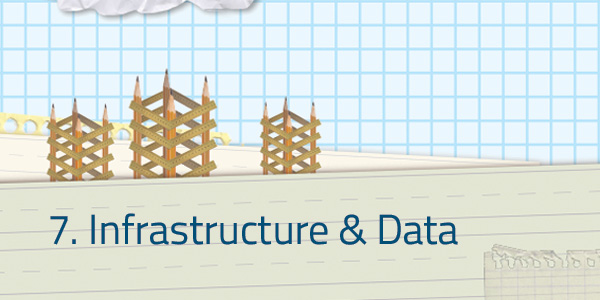Keynote Address by Howard Adam Levy, Principal of Red Rooster Group, delivered at SummX, Educational Foundation Summit on March 15, 2013, Salt Lake City, Utah.
Introduction
Good morning. My name is Howard Adam Levy and I am a specialist in helping nonprofit organizations improve their effectiveness through better branding and marketing communications.
This morning I am going to discuss the trends I see within the nonprofit world, particularly in terms of fundraising and donor relations. My objective is to give you insights that you can take home and use to improve your organizations. Let me start with a brief picture of the overall nonprofit landscape.
More Foundations, More Competition for Grant Dollars
- There are roughly 1.5 million nonprofit charities in America today, 500,000 of which were established in the last ten years.
- Over the past 20 years, the number of foundations has nearly quadrupled, with more than 66,000 foundations in operation today, distributing more than $32 billion each year.
- Two-thirds of those foundations were created in the 1990s, largely as a result of vast fortunes made during the dot-com revolution.
- Everywhere you look there are more hands asking for more money for very worthwhile causes. The net result is that fundraising for nonprofits is increasingly difficult.
- With the similar growth of education-focused foundations in the United States, your challenge is no easy task.
So what are the trends happening within the nonprofit organizations that would affect educational foundations?
More Strategic Approach Needed for Survival
In this competitive environment, in order to attract donors, nonprofits need to do more than talk about the “good work” they do. They must articulate what they do and how it results in change, why they are the best at it, and why someone should give money to them to do it.
To do this effectively requires strategic thinking which includes the positioning of your mission in a way that is bold and compelling; developing a comprehensive implementation plan to help you achieve your goals; committment to ongoing evaluation and improvement. Those nonprofits that are proactive and create and fully integrate their organizations into a strategically based long-term plan will be much more successful and sustainable.
Multichannel and Integrated Marketing Are the New Status Quo
Multichannel marketing — reaching out to audiences through a variety of communications channels including print, web, email, social media, texting, and in person — is nothing new in the nonprofit world. It is having an increasingly significant role in driving integrated marketing tactics as nonprofits rely more on multiple vehicles to deliver their communications.
Multichannel marketing will continue expand as the percentage of online donations increases and as more older donors adapt to new technology. While online giving is the fastest growing sector, traditional direct mail approaches are still effective. A combination of these two still proves to be one of the best strategies. We see a prevalence of strategic communications efforts that are consciously coordinated, orchestrated, and targeted across channels — based on particular audience segments and their individual preferences.
Donor Fatigue More Pronounced
The information overload continues. As individuals receive mail, email and other communications from marketers with greater frequency and intensity, it is increasingly challenging for nonprofits to have their messages heard. Text messages, RSS feeds, Tweets and Facebook posts only compound the problem. Tailored communications and messages that resonate with donors are critical to breakthrough the clutter and to be heard.
Engaging Donors By Giving Control
Smart nonprofits are getting better at engaging armies of supporters. But in order to do that, they have to cede some control. Nonprofits that allow volunteers, donors and advocates to engage their friends in their own way can expand exponentially the support for their organizations. Those nonprofits that continue to control the message and the method and that only engage their donors when they need money and ignore the increasingly networked world, will disappear.
Peer-to-Peer Engagement Expanding
Donors are increasingly relying on input from friends, family and co-workers to make decisions, particularly the younger generations. Nonprofits need to call upon their most vocal and loyal supporters to be active promoters of their cause and organization.
Loyal Donor Focus
Organizations are concentrating on the loyalty of an individual donor rather than the size of the gift. They are worrying less about the transactional donor and investing more time and energy on the loyal donor who attends activities/events, reads their marketing and communications materials, engages with them on social media platforms, and regularly volunteers. These loyal donors drive ongoing peer engagement, generate support from donor networks and motivate organizations to develop loyalty stewardship programs.
Smaller Gifts, More Often
Donors are providing smaller gifts but doing so several times over the course of the year. In addition, donors continue to drive smaller gifts toward projects where tangible results can be demonstrated. Organizations that provide small, impulsive gifting opportunities will be better positioned to strengthen their relationships with donors.
More strategic approach to funding
The financial status quo no longer works in the nonprofit sector; the hamster wheel of chasing receding dollars in a scattered approach doesn’t cut it. We are in a transformative recession and, as this fundamental economic restructuring continues, nonprofits are creating a different financial model and moving towards a broader, more strategic approach to funding their work. They are seizing the opportunity to be smarter, more honest, more open, and more sustainable.
Diversification of Revenue Sources
The combination of public sector funding cuts and social investment opportunities requires nonprofits to think in a more commercial way in terms of how they can generate revenue beyond their traditional income streams. Many of them are finding channels of revenue other than fundraising in order to stay afloat. Doing so requires them to have a more business-oriented mindset, do more strategic planning, and re-evaluate the structure of operations.
Having an understanding of your market, being able to generate income, developing a strong business discipline so that decisions are based on evidence and a clear plan for the future are all essential. How can nonprofits sell their services or expertise to generate revenue? Can they make money from their premises or intellectual capital, etc.? Strong management information is needed to understand your costs and where you can maximize value.
Creative Giving and Venture Philanthropy
Foundations and many individual philanthropists are exploring a number of new ways to invest in nonprofits beyond awarding a grant. Program-related investments such as loans to nonprofits at below-market rates and recoverable grants, where nonprofits return funds with no interest payments, are two such examples. The third kind of experiment, where private ventures establish an earned income base for nonprofits, has received more attention in the press than other forms, especially as a number of high-profile business leaders adopt this model for their charitable giving. Board members and senior management of an established organization must carefully determine if a venture capital model will substantially increase a nonprofit’s capacity to do its work; such a decision should not be based on potential grant revenue alone.
Earned Income and Social Investment
In earned income ventures,nonprofits works to solve social problems while earning money in exchange for a service. An example of this is the DOE Fund in New York City. Here, the founder, seeing the homeless population in the city, decided that instead of funding more homeless shelters he would develop an organization that would train this population and give them jobs. (In this instance, cleaning up litter in the streets.) This program successfully transferred the target people into productive workers while operating at a lower cost than that of the shelters.
Web, Mobile, and Social Media
Increasingly, nonprofits are looking at communications and fundraising through the lens of the “technology trifecta”: Web, mobile, and social media. And as they do, they are testing concepts across all three channels to determine the right mix for their own constituencies.
The Web is the go-to place for transparency and donor-interaction tools. Social media opens the door to better donor communication and stewardship. And Mobile continues to gain traction as technology and mobile marketing techniques improve.
The fundraising organization that doesn’t align its marketing efforts with all three channels will have a hard time maintaining its position in the nonprofit marketplace. Organizations also will need to manage expectations and develop effective donor delivery methods that don’t simply mimic other organizations’ tactics. Testing and experimentation is key to implementation.
Online and New Media Channels Continue To Extend Their Influence
Digital technologies and social media tools are now used all across nonprofits and not only for fundraising and marketing. Online’s influence outside of transactions is growing as older donors engage in web-based communications and advocacy. More digital engagement can save costs on travel and meetings, moving towards online collaboration and communicating internally in a more consistent way. Most importantly, Online continues as the fastest growing giving channel.
To be a player in the online world, nonprofits need to ensure that they operate faster, are able to respond to real-time events and that they have the policies and processes in place to do so.
Social Media Continues to Explode
All of the major social networks continue evolving and new digital platforms continue to emerge. It’s up to you to navigate the ever-changing social media landscape and decide what will work best for your organization’s fundraising efforts.
Evolution of Facebook and Twitter
The evolution of Facebook and Twitter, and the impact that has on how we engage with users, continues to be more sophisticated. We are past the stage of knowing they are important. Now we need to understand the data and how these spaces plug into existing content/sites. The JustGiving Facebook application, for example, already allows users to donate without leaving Facebook.
Twitter Promoted Products
Twitter rolled out “pay as you go” advertising this year to the masses, and now many nonprofits are joining top brands as “promoted” accounts and tweets. The social targeting options are enticing, and many nonprofits are seeing the insight into their followers as an added perk.
Social Analytics
Savvy nonprofits put their social media data to work. Already, companies like SocialMention, HootSuite, and others are looking to give nonprofits a full picture of their social media presence, along with a sense of how friends and followers are responding.
Image Blogs for a Cause
Tumblr and Pinterest are both seeing huge growth.These image driven platforms seem perfectly poised to offer quick and easy way for nonprofits to share images. With a viral element, one compelling image can have a significant reach across the web.
Donors Can Rate Fundraising Appeals
Thanks to the growing popularity of consumer feedback platforms such as TripAdvisor and Yelp, we will see new sites emerge that allow donors to rate their fund-solicitation experiences and share those ratings and experiences with their friends.
What impact does this have on the donating process?
Giving has become a quick-and-easy experience that meets individuals’ impulsive need to serve the greater good.
- Simple Donation Processing: As more people are reading email on mobile devices, a simple, mobile-friendly donation form is becoming important to any nonprofit’s email marketing campaign. Online constituents expect their web transactions to be easy.
- Improved Transaction Times: Organizations are reducing the time between the giving decision and the actual transaction. One-click giving and other impulse-gifting technologies are gaining in popularity.
- Mobile Giving: More than Text to Give, mobile giving continues to increase as the number of smartphone users increases. Smart nonprofits will use mobile giving to coincide with large events or virtual actions. This leverages social pressure of a crowd to drive people to pull out their phones to give.
Crowdfunding by Donor Networks
The internet is providing more vehicles for donors to contribute. We see more donor networks comprised of individuals who come together around specific causes, engage in volunteerism, and/or willingly promote the activities of the causes and organizations they support. There are donor advised funds and giving portals such as Donor’s Choice. Increasingly, fundraising staff have the capability to track these networks as well as other peer groups and use that information to leverage their resources.
More Honest Communication Between Nonprofits and Donors
Nonprofits must continue stepping up their game to attract new donors. Increased openness and transparency provides more insight to supporters and builds trust – a very important factor when pulling out a credit card.
With regards to impact measurement and reporting, organizations are moving from annual reports to real-time reporting of their impact in the community. Fundraisers are more adept at using digital communications technologies and creative design to inform donors about the outcomes achieved by their dollars. For their part, donors demand such reporting.
Personalization
Not For Profit supporters want to be able to define and customize how they are communicated to (e.g. go paperless, set frequency of emails and filter for content). The burden of expectation for nonprofits is being set by the for-profit sector.
“One size fits all” approaches to nonprofit communication efforts are becoming a thing of the past with the rise of social analytics. Personalized newsletters and emails show supporters their value and grab their attention, making your nonprofit’s messages less likely to go in the junk bin (real or digital).
Communication Control
Donors have the ability control how they receive communications from your organization based on personal preference and interests. Improvements in communications technology makes it easier for nonprofits to connect with donors who seek specific information about the impact of a gift and/or an organization’s health. In addition, organizations can allocate communication and marketing resources according to donor preference, rather than making assumptions about what donors want based on their content consumption.
With the growing number of ways to communicate to followers also comes a growing backlash against a digital overload. Allowing supporters to filter the ways they are communicated with (email frequency, paper-free, content filters, etc.) lets organizations reach supporters without annoying them.
More Ambassadors
Nonprofits are discovering the real power of online relationships to identify, work with and embrace the potential of their supporters. There are more ambassadors and blogger engagement programs but also more involvement from local communities.
More Sophisticated Volunteer Engagement
Due to a lack of jobs there are more people available to volunteer, but less money and staff to manage them. Nonprofits need to try and put more faith in the volunteers: positive encouragement and more ownership makes volunteers to feel a part of the organization.
Smarter Boards
The new harsher economic environment necessitates a smart, strategic, innovative board. To survive, board members must start asking more and better questions, must increasingly put themselves to their highest and best use, must focus more on strategic issues as opposed to day-to-day tasks, must empower their staff leadership to take the organization in more innovative directions, and must optimize the use of their money and their networks.
Building Infrastructure with Your Organization So It Can Grow
- Nonprofits need the structures and systems in place to utilize all of the technology.
- The website needs online giving capability as well as systems to collect donor information and integrate with your Donor Relationship Management.
- Content Management Systems such as WordPress are needed to update and change the site easily and frequently.
- Social Media require systems and staff in place to monitor conversations and report findings.
- Integration of all components so they work well together and you can take advantage of your donor lists.
Better Use of Data
Since there is more data available than ever before, it is imperative that nonprofits not just collect it, but understand it to do something with it. Organizations must be able to utilize the vast the data we have and make effective decisions and plans with it.
Closing
I hope you will see the ideas I have just presented as a lens for the rest of the conference, and can focus on one area that can drive the greatest improvement for your organization. This is a very exciting time to be in the nonprofit industry and participate in the changes as well as adapt to the new technology.










